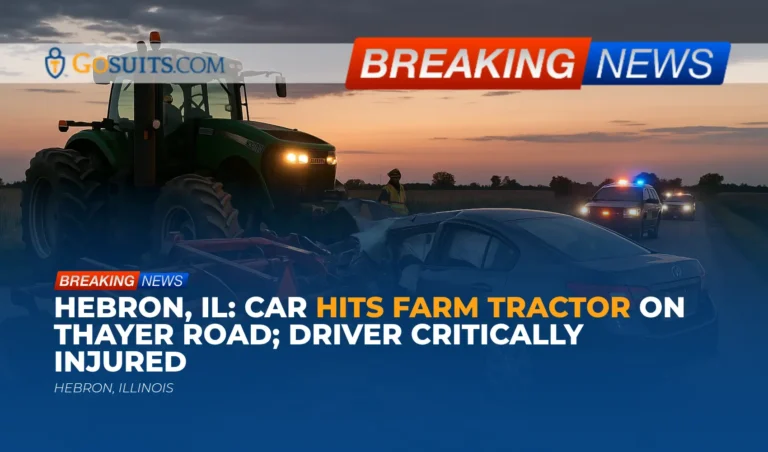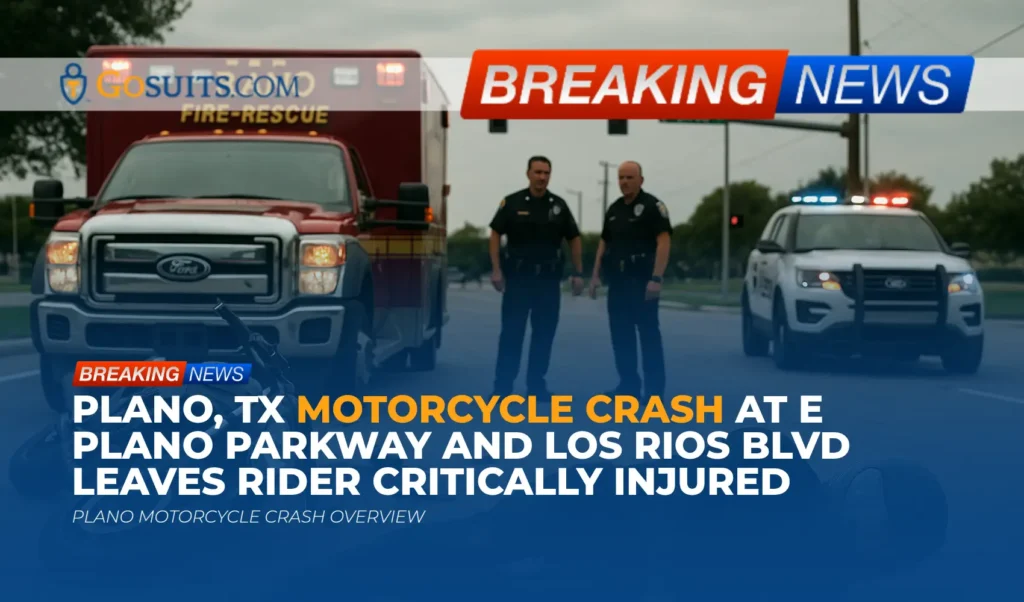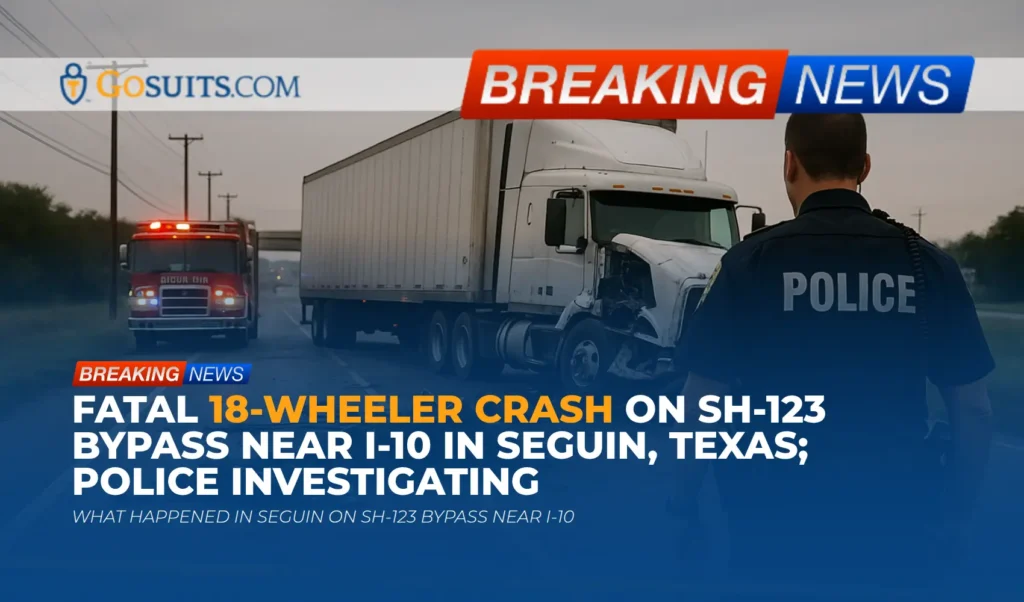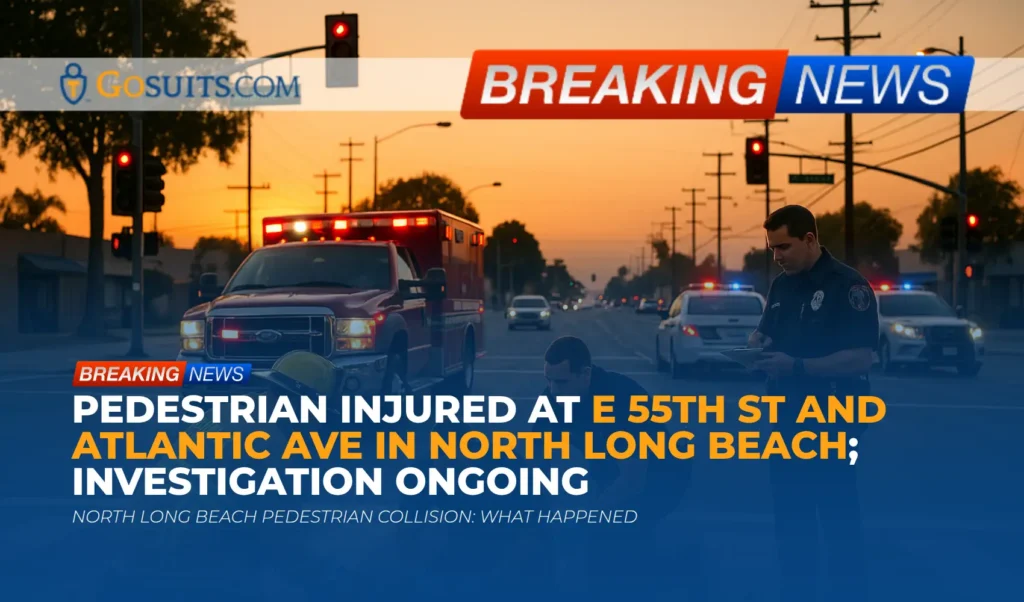- What happened
- Where and when it happened
- Safety context: farm equipment on public roads
- Seat belts, impairment, and injury severity
- Legal insight: potential civil liability in Illinois
- Evidence that can matter in a farm-equipment collision
- Where to obtain official records and information
- Medical care and access to records
- Insurance questions after a tractor–motor vehicle crash
- Practical next steps after a serious rural-road crash
- Why prompt action matters
- Sources and references
- Commentary from Gosuits Hebron, Illinois Personal Injury Attorney
What happened
Based on information reported by local authorities, a serious two-vehicle crash occurred in rural McHenry County, Illinois, involving a passenger car and a farm tractor with an attached implement. Just before 8 p.m. on a Monday evening, first responders from the McHenry County Sheriff’s Office and other agencies were dispatched to Thayer Road west of Route 47 near Hebron. Preliminary findings indicate a car traveling westbound on Thayer Road struck the disc ripper attachment of a Case 620 tractor that was heading eastbound. The collision caused major damage to the car and trapped the 36-year-old Hebron driver, who had to be extricated. He was transported by ambulance to Northwestern Medicine McHenry Hospital and was reported to be in critical condition. The tractor operator, a 78-year-old man also from Hebron, was not injured. Investigators stated the car’s driver was not wearing a seat belt, and they believe alcohol may have been a factor; the investigation remains active and ongoing with the Sheriff’s Office Major Crash Investigation Unit.
We recognize that incidents like this are traumatic for everyone involved, including families, neighbors, and the farming community. Serious injuries can change lives in a moment. The purpose of the discussion below is to explain the safety issues and general civil law considerations that often arise in tractor–motor vehicle crashes on rural roads in Illinois, and to identify resources that can help with information-gathering and next steps. We do not speculate beyond what officials have reported, and we focus on general principles that may apply in similar situations.
Where and when it happened
The crash occurred:
- Location: Thayer Road, west of Illinois Route 47, in rural McHenry County near Hebron, Illinois.
- Time: Just before 8 p.m. on a Monday evening, around nightfall. Reduced daylight at that hour can affect visibility on unlit rural roadways.
- Vehicles: A passenger car and a Case 620 agricultural tractor equipped with a disc ripper attachment.
- Injuries: The car’s 36-year-old driver sustained serious injuries and was transported in critical condition. The 78-year-old tractor operator was not injured.
- Status: The McHenry County Sheriff’s Office Major Crash Investigation Unit is conducting the investigation.
Rural corridors like Thayer Road routinely accommodate both farm equipment and passenger vehicles, especially during planting and harvest seasons. This shared use can create unique hazards, particularly at dusk or after dark, when farm implements and attachments may extend beyond a tractor’s typical profile and can be harder to detect without proper lighting and markings.
Safety context: farm equipment on public roads
Illinois law permits agricultural equipment to travel on public roads to move between fields and facilities. Because many implements are large, slow-moving, and wider than a single lane, the law and state safety guidance emphasize visibility, lighting, and cautious passing. Key points include:
- Slow-moving vehicle emblem: Farm tractors and implements that travel on public roads at 25 mph or less are generally expected to display a triangular slow-moving vehicle emblem to alert approaching drivers. Illinois’ Rules of the Road addresses the meaning of this emblem and driver responsibilities when approaching such vehicles.
- Lighting after dark: After sunset or when visibility is limited, farm equipment should use lights in accordance with state lighting requirements so that equipment and any towed or attached implements are visible from the front and rear. Proper lighting and reflectors on the outermost edges help road users judge the equipment’s size and position.
- Implements and attachments: Attachments like disc rippers may extend laterally or to the rear of the tractor. Marking and lighting the furthest projecting points help approaching drivers see the implement’s true footprint.
- Speed differential and closing distance: Passenger cars often close on farm equipment more quickly than expected. At 55 mph, a vehicle covers over 80 feet per second. Without adequate lighting or attention, drivers may not recognize a slow-moving implement in time to avoid a rear or side impact, especially at dusk.
- Passing and overtaking: Many rural roads are narrow and lack shoulders. Safe passing requires ample sight distance and care to avoid striking an extended attachment or oncoming traffic.
These safety fundamentals serve both drivers and operators of agricultural machinery. While investigators determine how this specific crash occurred, the shared responsibility on rural roadways is a central theme: farm operators must do what the law and safety guidance require to be seen, and motorists must approach, slow, and pass cautiously.
Seat belts, impairment, and injury severity
Authorities reported that the injured driver was unbelted and that alcohol may have been involved. Without drawing conclusions about fault, two general safety realities are well-established:
- Seat belts save lives and reduce injuries: National highway safety research consistently shows that seat belts are one of the most effective ways to reduce serious injury and death in crashes. In Illinois, wearing a seat belt is required for most drivers and passengers. Nonuse often correlates with more severe injuries in high-energy collisions.
- Impairment affects reaction time and judgment: Alcohol impairment reduces the ability to perceive hazards and react appropriately, particularly at night. National data also show increased crash and injury risks associated with impaired driving.
From a civil-injury standpoint, these facts interact with legal rules in important ways, addressed below. Notably, Illinois limits how evidence of seat belt nonuse can be used in civil cases and applies a comparative fault framework to allocate responsibility if more than one party’s actions contributed to a crash.
Legal insight: potential civil liability in Illinois
Every collision turns on its own facts. In a tractor–vehicle crash, potential civil-law issues can include the visibility and operation of the farm equipment, the motorist’s speed and attentiveness, lighting conditions, and any impairment. Some key Illinois civil-law principles that often come into play are:
- Comparative negligence: Illinois follows a modified comparative fault rule. If more than one party is negligent, a jury may assign percentages of fault. A person who is more than 50 percent at fault cannot recover damages; if 50 percent or less at fault, damages are reduced by that percentage. This framework can be crucial in shared-use roadway crashes where multiple decisions contributed to the outcome.
- Seat belt nonuse in civil cases: Illinois generally does not allow failure to wear a seat belt to be used as evidence of negligence. It may be considered only to reduce damages for certain injuries and only up to a defined percentage cap under state statute. That means nonuse may not eliminate a claim, even if it may affect damage calculations.
- Farm equipment lighting and marking: Compliance with state lighting and slow-moving vehicle marking requirements is relevant to whether equipment was reasonably visible. Noncompliance, if proven, can weigh on liability. Conversely, where equipment is properly lit and marked and a motorist fails to slow or keep a proper lookout, fault may rest primarily with the motorist.
- Driver impairment: Evidence of impairment is a serious safety concern and can influence civil liability determinations. In civil cases, impairment may be considered along with all other evidence in assigning fault percentages. Investigators’ findings, toxicology results where available, and witness accounts often inform this analysis.
- Time limits to file: In Illinois, most personal injury claims must be filed within two years of the injury. Different and shorter time frames can apply in certain contexts, so tracking dates is important.
Nothing above decides fault in this crash. Rather, it outlines how Illinois law typically addresses similar incidents so families have a sense of the issues investigators and insurers may evaluate.
Evidence that can matter in a farm-equipment collision
Preserving facts promptly can make a difference in understanding what happened and in any insurance claim. Helpful evidence often includes:
- Official reports and scene data: The Sheriff’s crash report, diagram, and photographs; measurements of skid or yaw marks; debris and final rest positions; lighting conditions noted by responders; and roadway characteristics.
- Vehicle and implement inspections: Documentation of damage points; the tractor’s and car’s lighting, reflectors, and operational status; the presence and condition of a slow-moving vehicle emblem; and whether outermost edges of implements had reflectors or lights.
- Electronic data: Airbag control module data from the car, if available, can show speed, braking, and seat belt status seconds before impact. Some agricultural equipment can also log basic operating data.
- Witness statements: Observations of speeds, lane position, lighting seen, or other relevant behavior before the collision.
- Medical records and injury documentation: EMS run sheets, emergency department notes, imaging reports, and treating provider records that detail injuries and treatment.
- Photographs and videos: Images of the scene, vehicle interiors and exteriors, any visible injuries, weather and lighting at similar times, and the equipment’s lighting as configured.
When possible, preservation steps should be taken early. Vehicles and implements may be repaired or returned to service quickly, and electronic data can be overwritten. Families often benefit from coordinated evidence collection.

Where to obtain official records and information
Several public offices and providers can provide records or information relevant to a serious crash in McHenry County:
- Police crash report and investigation materials: The McHenry County Sheriff’s Office is the investigating agency. Request the crash report and any available supplemental materials through its records or FOIA processes. McHenry County’s government site provides information about filing public records requests and department contacts. When requesting, include names, date, time, location (Thayer Road west of Route 47), and the report number if known.
- Coroner’s office (if a fatality later occurs): If an injury case tragically becomes a fatality, the McHenry County Coroner’s Office is responsible for decedent examinations, death certification, and release of reports to next of kin. Autopsy and toxicology results, if conducted, are generally provided through the Coroner according to Illinois law and county policy.
- EMS and fire reports: The responding fire protection district or EMS provider maintains run reports and times. These can be requested by the patient or authorized representative.
- Road authority information: If there are questions about roadway design or signage on Thayer Road, the relevant township, county highway department, or IDOT district may have maintenance and signage records.
Tip: When requesting government records, written requests that clearly specify the documents and time window can speed processing. If a records unit provides forms, use them and keep copies of your submissions and responses.
Medical care and access to records
In the United States, patients have a right to access their medical records, including EMS reports and hospital records, with limited exceptions. In a serious-injury setting, families often need:
- Hospital records: Emergency department notes, physician orders, imaging (CT, X-ray), operative reports, and discharge summaries.
- EMS run sheets: Prehospital care documentation, vitals, Glasgow Coma Scale, and interventions.
- Rehabilitation and follow-up: Physical therapy, occupational therapy, and specialist records to document ongoing impact.
Hospitals typically provide instructions for requesting records through their Health Information Management department. A patient or a personal representative (with appropriate authorization) can submit a written request identifying the specific records and dates of service.
Insurance questions after a tractor–motor vehicle crash
Insurance coverage after a farm-equipment collision can be complex because multiple policies may intersect. Common considerations include:
- Auto liability insurance (motorist): Illinois requires minimum liability coverage for drivers operating passenger vehicles on public roads. If a motorist is found at fault, their liability insurance typically addresses others’ bodily injury and property damage up to policy limits.
- Farm or equipment coverage (tractor/implement): Farm enterprises often carry liability coverage that may apply to roadway operations of tractors and implements. Applicability depends on policy terms and whether equipment was being used in a manner contemplated by the policy.
- Medical payments and health insurance: Regardless of fault, a motorist’s own medical payments (MedPay) coverage, if purchased, can contribute toward initial medical bills. Health insurance is critical for ongoing treatment. Coordination of benefits and subrogation rights should be reviewed carefully.
- Uninsured/underinsured motorist (UM/UIM): If a liable party has no coverage or insufficient limits, UM/UIM on the injured person’s auto policy may come into play, depending on the facts.
Insurers often seek recorded statements early. Before contacting any insurance company about the facts of the crash, it is prudent to speak with a qualified attorney. What someone says to an insurer can be used against them, and early guidance can help prevent misunderstandings and protect rights while still complying with notice and cooperation duties contained in most policies.
Practical next steps after a serious rural-road crash
In the days and weeks after a serious collision, the following steps can help families navigate a difficult period and preserve important information:
- Prioritize medical care: Follow treating providers’ recommendations. Keep copies of discharge instructions, prescriptions, and imaging. Document symptoms and limitations as they evolve.
- Preserve evidence: If possible, ensure the car and involved equipment are preserved until they can be inspected and photographed. Save any dashcam footage, phone photos, and location data. Note weather, lighting, and roadway conditions.
- Collect official documents: Request the police crash report and any available photos or diagrams. If a citation is issued to anyone, obtain that record when available.
- Track expenses and impact: Maintain a folder for medical bills, out-of-pocket costs, and proof of lost income. Keep a simple recovery journal noting pain levels, sleep disruption, and restrictions on daily activities.
- Be cautious with insurers: Provide prompt notice of the crash to your own insurer as required by your policy, but do not give a recorded statement or discuss fault without first consulting an attorney. An initial free consultation can help clarify rights and obligations.
- Mind the deadlines: Calendar the two-year general Illinois statute of limitations for personal injury and any shorter contractual notice provisions that may appear in insurance policies.
Why prompt action matters
Timeliness often affects the clarity of the facts and the ability to address costs and care needs. Acting promptly can lead to the following benefits:
- Better evidence quality: Skid marks fade, vehicles are repaired, and electronic data can be lost. Early documentation improves accuracy.
- Medical continuity: Early specialist referrals and follow-up can improve recovery outcomes and reduce gaps in care that insurers might question later.
- Insurance coordination: Understanding which policies may apply helps limit delays and denials. Early review can avoid missteps in recorded statements.
- Legal time limits: The passage of time can limit options. Knowing the applicable deadlines reduces the risk of forfeiting claims.
What to do, generally:
- Obtain key records such as the police crash report, EMS and hospital records, and photographs from the scene and vehicles.
- Document injuries and losses with consistent medical care, organized billing, and a simple log of day-to-day challenges.
- Seek a free legal consultation with a seasoned injury attorney before engaging in detailed conversations with any insurer, so rights and options are understood and protected.
Why now: Windows for retrieving physical evidence and electronic data are short, eyewitness memories fade quickly, and statements given to insurers early can affect later outcomes. Acting while details are fresh can make future steps more manageable.

Sources and references
The following resources provide authoritative information on Illinois roadway rules, safety, and civil-law concepts mentioned above:
- Illinois Secretary of State – Rules of the Road (seat belt law overview, slow-moving vehicle emblem meaning, and general driving rules)
- 735 ILCS 5/2-1116 (Illinois modified comparative fault statute)
- 625 ILCS 5/12-603.1 (Illinois seat belt statute; evidentiary use and mitigation language)
- NHTSA – Seat Belts (national data on effectiveness of seat belts and injury reduction)
- NHTSA – Impaired Driving (effects of alcohol impairment on crash risk and injury)
- IDOT – Farm Vehicle Safety (safety guidance for sharing the road with agricultural equipment)
- University of Illinois Extension – Slow-Moving Vehicle Safety (educational guidance on SMV emblems, lighting, and roadway practices)
- U.S. HHS – Access to Your Medical Records (patient rights to obtain medical records)
- Illinois Department of Insurance – Auto Insurance Basics (coverage types and minimum liability requirements in Illinois)
- 735 ILCS 5/13-202 (two-year statute of limitations for personal injury)
- McHenry County Government (departments, FOIA processes; links to Sheriff and Coroner through county site)
Commentary from Gosuits Hebron, Illinois Personal Injury Attorney
Our thoughts are with the injured driver, the tractor operator, and their families and neighbors. A severe crash on a quiet rural road can ripple through a community. The aim of this article is to share general information about safety, records, and civil-law principles that might be helpful while the Sheriff’s Office continues its investigation.
At a high level, this kind of collision raises familiar questions we see in rural roadway cases: visibility of agricultural equipment and attachments in low light, the condition and placement of lighting and reflectors, the presence and condition of a slow-moving vehicle emblem, the motor vehicle’s speed and lookout, and the influence of any impairment or seat belt nonuse. Illinois applies a comparative fault system, so investigators and, later, insurers will likely evaluate how each factor contributed. That does not predetermine any outcome in this specific crash, but it frames the issues professionals tend to examine.
In the aftermath, insurers and corporations frequently move quickly to shape the narrative. Adjusters may ask for statements, request blanket authorizations for medical records, or present early settlement discussions before the full picture is known. People recovering from trauma often do not realize how a few words in a recorded statement or a broad records release can be used to minimize or shift responsibility. Experienced counsel can help ensure communication with insurers is accurate, complete, and fair, and that important evidence like vehicle data, scene photographs, and equipment inspections are preserved.
For anyone facing similar circumstances, a free consultation with a seasoned injury attorney can clarify rights and next steps without obligation. It can also help prevent avoidable mistakes in the first days after a crash, such as making detailed statements to an insurer before the facts are gathered, allowing crucial evidence to be lost, or missing short deadlines set by policy language. Even if no claim is ultimately pursued, early guidance can bring a measure of order to a difficult time.






